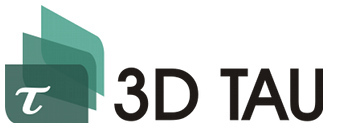3D Tau has developed and is making available via license a new Stereo-Step-Eclipse technology for enabling screens with stereoscopic 3D displaying capability. The patent-pending technology is designed to provide a full 3D experience viewable from multiple angles without the need for special glasses or other wearable devices like contact lenses, monoculars or helmets. It does not require viewer head tracking and, unlike existing applications, it enables any number of viewers, arrayed at any angle, to see the 3D image on the screen.
Unlike the existing developments, our solutions provide any number of freely positioned viewers to see 3D image. The technology works without any complicated holography equipment and requires no wearable devices like special stereo glasses or helmets. The 3D experience is achieved through a technologically simple design based on an optical screen image sequence processing scheme.
The Stereo-Step-Eclipse technology is designed to be embedded directly into a new generation of screens. It can also be implemented as an attachment to existing off-the-shelf 2D-screens of most types. While enabling the multi-angle display of 3D images, the technology preserves the full native screen resolution of the primary LCD screen.
3D Tau Stereo-Step-Eclipse technology is intended to be used in television screens, computer displays, game consoles, navigation systems, as well as entertainment and advertising panels. Also, the technology can be applied effectively to equip video conferences and exhibitions, remote medicine, in education and training simulators, avionics, surveillance and dispatching systems, robotic systems and other civilian or military applications.
In addition to showing images in 3D, the optical scheme can be used for augmented reality applications, when real and virtual objects are shown on the same screen simultaneously. This provides a new and impactful way to display modern video graphics content, with applications in motion pictures, TV, advertising and presentation, entertainment, education, scientific modeling, video gaming, industrial, transportation and military simulators, topographical maps and visual aids for navigation systems, avionics etc.
The optical scheme also enables dedicated views for multiple viewers of a single screen. In this case each viewer sees their specific content on the shared screen. For example, parents can view one video while their children, sitting a short distance to the side, can view a completely different video – all on one screen. In addition to applications in advertising, entertainment and surveillance systems, this mode solves a long-standing problem of limited space in aircraft cockpits, as well as crew compartments in other vehicles. With Stereo-Step-Eclipse technology, each member of an aircraft crew can see their own specific data while looking at the same dashboard screen. This same capability can be used effectively in simulation and training situations.
